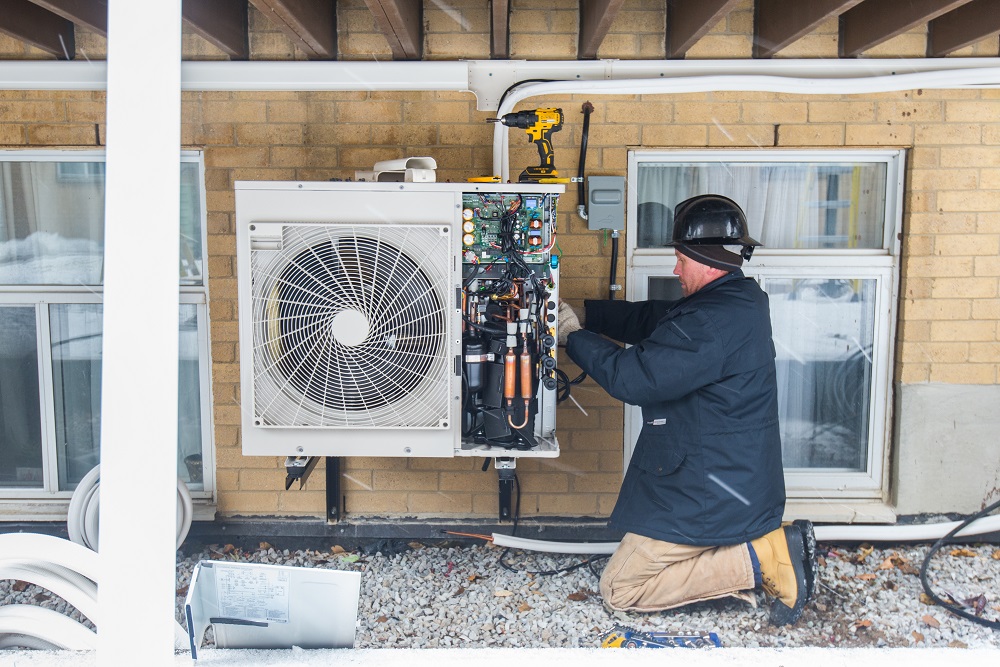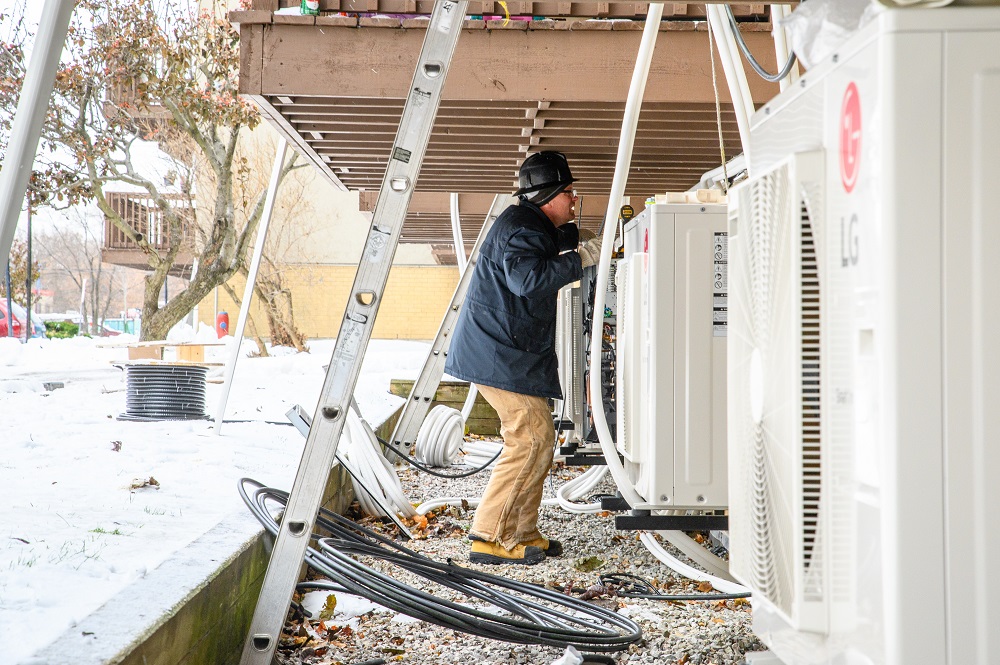The second in a series of blogs offering a ‘behind the scenes’ look at TAF’s deep retrofit work at a Toronto site.
It was great to see the enthusiastic responses to the first entry in our Deep Retrofit Diary. Where that post provided an overview of the project, I want to focus here on some of the questions we received from readers.
But first, a quick project update. We’re about one-third of the way through installation of the air-source heat pumps (ASHPs), and we will soon start installation of new ultra low-flow toilets, followed by air-source domestic hot water heat pumps. The project is right on schedule, and going so smoothly that I don’t have much more to say. With that, let’s get back to the feedback on the first post.


Readers ask, we answer: what about the building envelope?
If we created a word cloud from reader’s comments, one word would loom large over all the others: envelope. How can we discuss a deep energy retrofit without mentioning envelope?
There’s one really good reason for this: air-sealing and insulation work were done at the site back in 2014. Blower door tests were run for most of the 120 suites, and we plan to do another round of tests when the full project is complete — after Toronto Community Housing (TCH) caps off the envelope work by replacing the original aluminum-framed windows. In this project, the mechanical work is sandwiched between envelope work, and that’s just fine with me.
TCH took what is often described as the correct first step in a retrofit and addressed the envelope before tackling mechanical systems. However, this sequencing may not always be possible due to budgetary constraints, critical needs, and timing. A piecemeal retrofit approach can work, but the pieces need to fit together and align with the long-term vision, goals, and plan for the retrofit. The Passive House Institute describes a step-by-step approach as “the most viable strategy of a building retrofit,” but the individual pieces must be compatible with, and contribute to, a deep energy retrofit.
With limited budgets, it’s understandable that building owners prioritize the most cost-effective measures (like air-sealing and lighting) or implement efficiency measures that also address critical capital needs or provide important co-benefits like cooling. So while addressing deep energy retrofits from the outside in and in one large comprehensive project may be ideal, often this just isn’t feasible or practical. It may be more challenging, but with adequate planning, it is possible to do a deep energy retrofit in stages over multiple years. What we don’t want is for perfection to be the enemy of emissions reductions. Or at least I don’t.
Clarification for readers on project targets and cooling impact
Other readers asked for clarification on the 40 per cent reduction target. More specifically, they wanted to know: 40 per cent of what? Fair question. We’re targeting 40 per cent reduction of site energy and carbon emissions (calculated with our marginal emissions factors) from a pre-retrofit baseline derived from 2017 utility data. We will also calculate energy savings from a utility baseline established before the air-sealing and insulation work to see the impact of all the “pieces”, but for our measurement & verification (M&V) purposes 2017 is the base year for this project.
And finally the last question: what about the energy impact of cooling? Ecosystem, our engineering partner on the project, estimates a small bump in annual electricity consumption of about 180 kWh per suite due to increased cooling. This is less than 7 per cent of the electricity the heat pumps will save over the course of a winter. Why does cooling have such a small energy impact? Some residents already use inefficient window-shaker or portable air-conditioner; but more importantly, cooling in Toronto is far less energy intensive than heating. This is fairly easy to conceptualize when we consider that the average high temperature in Toronto in July is 27°C, while the average low temperature in January is -9°C. If, for example, we’re trying to maintain an indoor temperature of 22°C year-round, we have to raise the indoor temperature 31°C above the outdoor low in the winter, but lower the indoor temperature just 5°C below the outdoor high in the summer. Energy consumed for cooling doesn’t hurt us much in this project, but does provide an extremely important benefit to residents.
I appreciate all the responses to the original blog post — keep ’em coming! This project is one (large) step in a series that started with air-sealing and will continue through high-performance windows. When complete, this townhouse site will be low-carbon and comfortable.
Check out other posts in the retrofit diary series.
The current ‘deep retrofit’ phase of our TowerWise project is made possible through the financial support of:
- The Green Municipal Fund, a Fund financed by the Government of Canada and administered by the Federation of Canadian Municipalities
- The Independent Electricity System Operator
- The National Housing Strategy under the NHS Demonstrations Initiative of Canada Housing and Mortgage Corporation
- Natural Resources Canada
